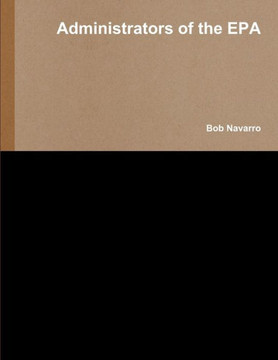
Createspace Independent Publishing Platform
Epa Assessment Of Risks From Radon In Homes
Product Code:
9781548593292
ISBN13:
9781548593292
Condition:
New
$17.31
Radon has been classified as a known human carcinogen and has been recognized as a significant health problem by groups such as the Centers for Disease Control, the American Lung Association, the American Medical Association, and the American Public Health Association. As such, risks from in-home radon exposure have been a major concern for the EPA. In 1992, EPA published its "Technical Support Document for the 1992 Citizen's Guide to Radon," which included a description of its methodology for estimating lung cancer risks in the U.S. associated with exposure to radon in homes. That methodology was primarily based on reports published by the National Academy of Sciences (NAS). In one of those reports, known as "BEIR IV" (NAS 1988), a model was derived for estimating the risks from inhaled radon progeny, based on an analysis of epidemiologic results on 4 cohorts of occupationally exposed underground miners. In 1994, the EPA sponsored another study, "BEIR VI", to incorporate additional information that had become available from miner cohort and residential studies. In early 1999, the NAS published its "BEIR VI" report (NAS 1999), which presented new risk models based on information from 11 miner cohorts. A major conclusion of the BEIR VI report was that radon is the second leading cause of lung cancer after smoking. In light of findings and recommendations in BEIR VI, this report presents a revised risk assessment by EPA's Office of Radiation and Indoor Air (ORIA) for exposure to radon in homes.
| Author: U. S. Environmental Protection Agency |
| Publisher: CreateSpace Independent Publishing Platform |
| Publication Date: Jul 05, 2017 |
| Number of Pages: 100 pages |
| Language: English |
| Binding: Paperback |
| ISBN-10: 154859329X |
| ISBN-13: 9781548593292 |

Epa Assessment Of Risks From Radon In Homes
$17.31
Radon has been classified as a known human carcinogen and has been recognized as a significant health problem by groups such as the Centers for Disease Control, the American Lung Association, the American Medical Association, and the American Public Health Association. As such, risks from in-home radon exposure have been a major concern for the EPA. In 1992, EPA published its "Technical Support Document for the 1992 Citizen's Guide to Radon," which included a description of its methodology for estimating lung cancer risks in the U.S. associated with exposure to radon in homes. That methodology was primarily based on reports published by the National Academy of Sciences (NAS). In one of those reports, known as "BEIR IV" (NAS 1988), a model was derived for estimating the risks from inhaled radon progeny, based on an analysis of epidemiologic results on 4 cohorts of occupationally exposed underground miners. In 1994, the EPA sponsored another study, "BEIR VI", to incorporate additional information that had become available from miner cohort and residential studies. In early 1999, the NAS published its "BEIR VI" report (NAS 1999), which presented new risk models based on information from 11 miner cohorts. A major conclusion of the BEIR VI report was that radon is the second leading cause of lung cancer after smoking. In light of findings and recommendations in BEIR VI, this report presents a revised risk assessment by EPA's Office of Radiation and Indoor Air (ORIA) for exposure to radon in homes.
| Author: U. S. Environmental Protection Agency |
| Publisher: CreateSpace Independent Publishing Platform |
| Publication Date: Jul 05, 2017 |
| Number of Pages: 100 pages |
| Language: English |
| Binding: Paperback |
| ISBN-10: 154859329X |
| ISBN-13: 9781548593292 |






